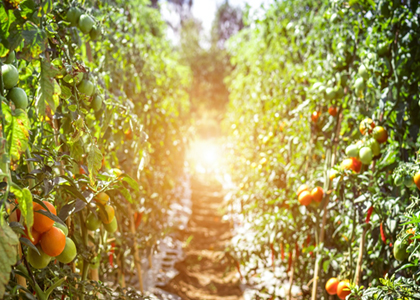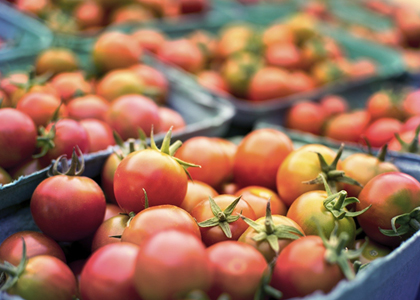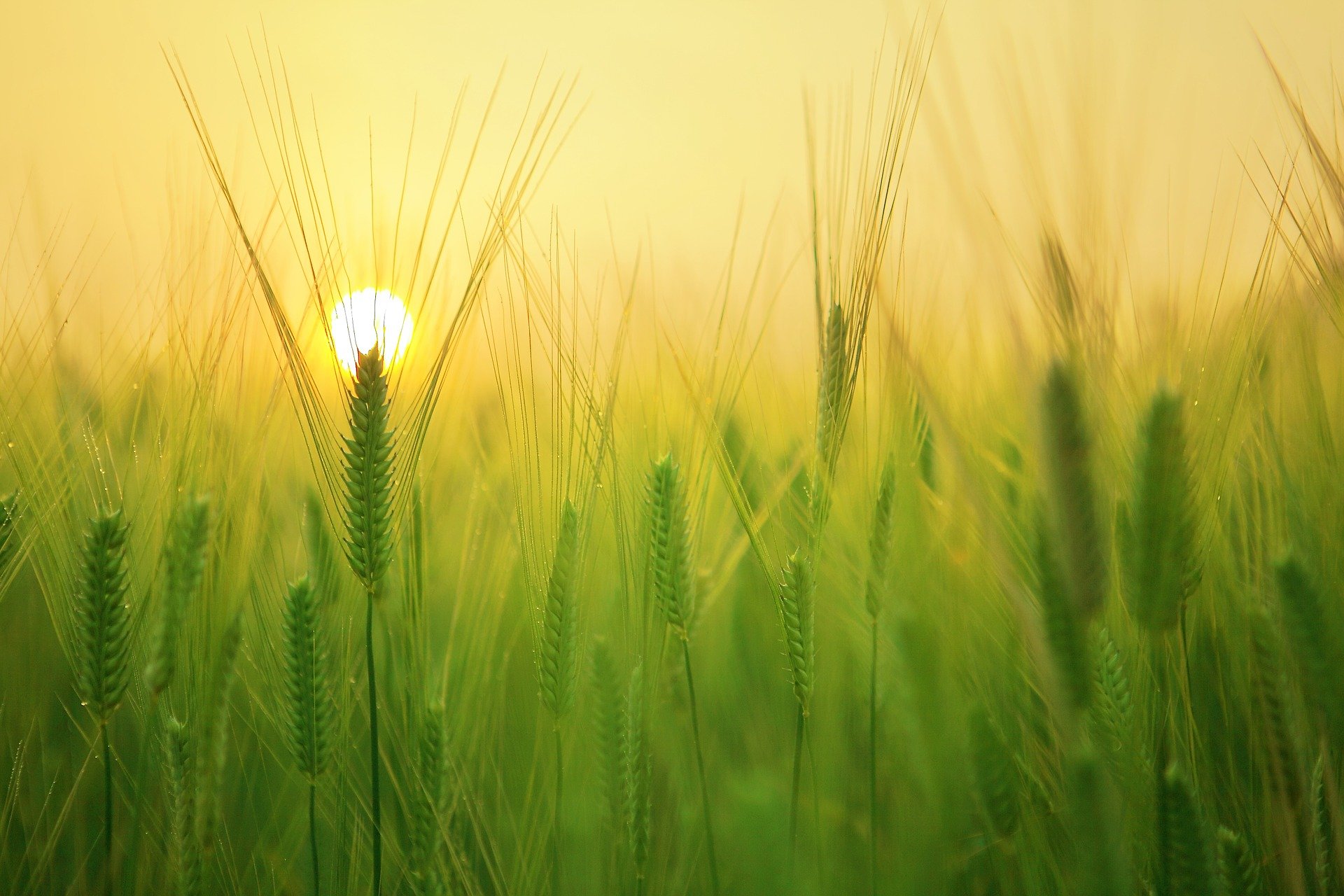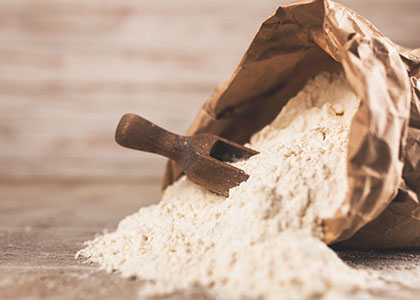Home / Blog / 3 ways your agribusiness can reduce its water consumption
Summary
Geographically, Saudi Arabia is located in one of the most water-scarce regions in the world. What’s more, 85% of available water is used for irrigation purposes. With a growing population, diminishing natural water resources, and negligible annual rain, the pressure on agriculture is mounting. Added to that, the looming threat of climate change and an expected water shortfall due to intensive over-drafting of renewable and non-renewable groundwater resources are all threatening farming enterprises like yours with reduced water quotas and rising costs.
It is time that forward-thinking farmers become smart about maximizing utility from existing resources. By upgrading infrastructure across your farm, introducing digitalization to irrigation processes, and investing in water recycling options, you can benefit from lowered costs and eliminate wastage, as well as reduce your carbon footprint for more sustainable agricultural practices.
In this article, we highlight options that can help your agribusiness reduce its water consumption.
INDEX
IDENTIFYING YOUR CURRENT PAIN POINTS
REDUCING YOUR WATER CONSUMPTION THROUGH:
3 WAYS YOUR AGRIBUSINESS CAN REDUCE ITS WATER CONSUMPTION
As a country, Saudi Arabia sits atop reserves of one of the world’s most precious liquids – oil. But it also severely lacks an even more important resource – water. Global demand and dependence on the former have helped the country ride decades of economic prosperity, which have led to infrastructural and technological advancements. However, water security still remains one of the greatest strategic challenges, not just for Saudi Arabia, but also the wider GCC.
With the population doubling in the last two decades, the GCC faces an estimated 20 billion cubic meter water deficit in the future[1]. Saudi Arabia consumes double the world average of water per person – a staggering 263 liters[2] per capita each day and rising.
With limited rain, shrinking natural aquifers, increasing urbanization, a growing population, and competing industries, the pressure on water is mounting. The threat of water scarcity has the potential to stagger and derail the country’s efforts to diversify its economy unless there is a change in domestic water consumption patterns through improved farming, infrastructural investments, and consistent public awareness campaigns.
That is why it is imperative that agricultural enterprises like yours help ease the burden and practice smart irrigation methodologies.
IDENTIFYING YOUR CURRENT PAIN POINTS
The quality of groundwater deteriorates through over-exploitation or through direct pollution, reducing its usability for agriculture. Below are just some of the pain points that you may be experiencing, due to the scarcity of this vital natural resource:
- Limited freshwater resources are available to you.
- There is increasing water scarcity due to aridity, population growth, and changing agricultural policies.
- Inefficient water use because of traditional irrigation practices.
- Inefficient municipal/domestic sector divisions creating a high per capita water use and high rates of unaccounted-for water.
- Water allocation conflicts between the agricultural and municipal sectors.
- Weak water institutions due to fragmentation of water authorities, lack of coordination and inadequate capacity development.
- Inferior quality of water services in large cities due to the rapid pace of urbanization.
- Dated and weak irrigation infrastructure.
Here are three ways you can combat system inefficiencies and manage your agricultural water quotas more effectively.
- USE EFFICIENT FARM-MANAGEMENT SYSTEMS
Focusing on efficient water management through smarter irrigation methodologies is not only a huge priority for the government but can also help you farm better and get more from the same resources.

-
- Water delivery systems: When using ditches to store and transfer water through irrigation canals, using impermeable materials for lining can decrease water losses and improve efficiency. Unlined ditches can cause you to lose 25% to 40% of your water through seepage. Equally, underground or portable piping systems help minimize water loss due to evaporation.
- Drip Irrigation: Implementing this system improves water-use efficiency by up to 95%. Drip irrigation is more effective than traditional sprinkler systems because it delivers water directly and quickly to a plant’s roots. This means that farmers like you can reduce water usage by over 60% compared to traditional flooding methods.
- Irrigation scheduling: Smart water management is not just about how water is delivered but also when, how often, and how much. To avoid under or over watering your crops, you can monitor weather forecasts, soil and plant moisture, and adapt your irrigation schedule to the conditions. For example, flood irrigating orchards at night can slow down evaporation, allowing water to seep down deeper into the soil.
- Efficient irrigation networks: If leaky networks are a key area of concern for you, it pays to note that leaks cause 30% to 50% of water loss in an irrigation system. This wastage is something you can ill afford. Whilst water authorities are issuing more tenders to assess and repair the damage to their networks, you need to implement greater vigilance and infrastructural support from your end by optimally maintaining your irrigation delivery systems.

-
- Planting drought-tolerant crops: Growing crops native or resistant to the local climate is another way to use less water. Using crops that are genetically engineered to withstand harsh growing conditions such as drought and pests, can further reduce irrigation consumption.
- Cover crops: These are specific plants that are mainly grown for the benefit of the soil rather than crop yield. Planting grasses, legumes, or green plants can help protect soil that otherwise goes bare between growing seasons. It also reduces weeds, increases soil fertility, organic matter, and helps prevent erosion and compaction. When you do plant a crop on the field, it is more fertile and water-dense – thereby requiring less irrigation.
- Conservation tillage: With conservation tillage practices, you plant without removing residue from the previous season’s crop. Like cover crops, conservation tillage methods, such as low- or no-till, help retain moisture and nutrients in the soil. This means your crop can make do with lesser water whilst growing.

-
- Hydroponic farming: Hydroponics allows you to grow plants in a water-based, nutrient-rich solution, devoid of soil. This farming method is gaining a fair amount of attention as an alternative farming methodology in countries with extreme climates, like Saudi Arabia.
This environmentally safe, high-producing farming method decreases pressure on land and water resources. It uses 10% of the water used in open fields as irrigation systems recapture water for recirculation. Water loss is further minimized from evaporation or leakages within the system.
- Hydroponic farming: Hydroponics allows you to grow plants in a water-based, nutrient-rich solution, devoid of soil. This farming method is gaining a fair amount of attention as an alternative farming methodology in countries with extreme climates, like Saudi Arabia.

- INTRODUCE DIGITAL TECHNOLOGY FOR SMART FARMING
To better manage water distribution, Saudi Arabia plans to divide the country into four to six regions, with a view toward issuing comprehensive water management contracts for tender. In the first phase of the program, the Kingdom will invest in the diagnosis of water wasted, and the technology required to reduce losses in the system.
Going forward, as urbanization increases, water quotas for agriculture will be fixed, leaving no margin for wastage. Implementing smart technological inputs across individual farm enterprises like yours can help you maximize productivity.
The following digital processes are gaining popularity by helping agribusinesses conserve water.
- Using Internet of Things (IoT) across agriculture: IoT solutions bring together sensors, specialized equipment, buildings, and other agricultural assets to create smart farming systems that drive higher yields without putting additional strain on the environment.
IoT farming helps you operate more effectively by continuously collecting data from multiple in-field and in-building sensors for smarter irrigation solutions. Implementing IoT in agriculture can also help you reduce labor-intensive tasks by automating irrigation systems.
Additionally, IoT can also be used to:
-
- Monitor water tank levels in real-time to make the irrigation process more efficient. Collecting live information allows for precision farming and increased operational efficiency.
- Make greenhouses smarter by enabling weather stations to automatically adjust the climate conditions according to plant requirements and farmer instructions. For example, IoT-connected greenhouses monitor plants to deliver an “informed” amount of water to reduce wastage. They also eliminate the need for labor to manually manage irrigation needs.

- Smart irrigation: In the same way it is transforming other industries, digitalization can deliver huge efficiencies in water management.
The integration of technology can greatly improve monitoring and consumption across the entire irrigation cycle. This helps you cut costs, reduce waste, and become environmentally conscious – with minimum impact on productivity.
You can implement smart irrigation through:
- Sensor-based irrigation systems use sensors to collect measurements from the environment and crops. They send collected data to a cloud and conduct an analysis to offer best-use recommendations.
For example, sensors connected to weather apps automatically adjust water capacity for predicted rain or increased day temperatures. Fully automated systems are also connected to dispatch sensors and software within the water infrastructure.
These allow additional control through pumps and valves to autonomously execute precision irrigation schedules. Sensor irrigation systems also connect to smart devices, allowing greater remote execution and ease.
- Sensors in water pipes can pinpoint the exact site of system leakages, increase monitoring and help speed up repairs.
- Moisture sensors in the ground are able to communicate information about the level of moisture present at different depths in the soil.
- Smart meters provide valuable data to help you better manage supply and demand.

- Drone-based agricultural solutions: Offering a range of uses across industries, in agriculture drones are being paired with data collection and analysis capabilities to deliver exceptional value through real-time insights and flexibility of usage.
Ground and aerial drones are used for crop health assessment, monitoring, planting, spraying, and field analysis. Through planned strategies based on real-time data, drones with thermal or multispectral sensors identify areas that require changes in irrigation, helping you water your fields smarter.
Once crops are growing, sensors indicate their health and calculate their exact vegetation index, to help you adjust irrigation and fertilization for increased yields.
- Renewable energy: Investing in renewables is also an investment in water conservation. Widely available options, like solar, geothermal, and wind, use negligible amounts of water.
Wind power helps generate electricity to pump water for irrigation. Solar energy saves money, increases self-reliance, and reduces pollution. Powering your enterprise through renewable energy helps circumvent the wastage of available resources.
- INCREASE THE USE OF TREATED WATER
Saudi Arabia has set itself an ambitious goal of achieving 100% usage of treated wastewater by 2025, putting the country on a trajectory to become the third-largest water reclamation and reuse market in the world, following China and the U.S.
Whilst leak detection, water conservation technologies, and design-build-operate contracts have recently emerged as growing trends in the country, the key areas of focus in the water sector are desalination and wastewater treatment.
- Desalinated water for irrigation: To meet domestic water requirements, Saudi Arabia has turned to desalination. Whilst the process of desalinating water is an expensive investment, the government is going ahead with the construction of large plants to make water more easily accessible across the Kingdom.
Thermal and membrane-based desalination technologies are playing an important role in helping farmers like you irrigate crops. Desalination separates undesirable salts from the water, and when applied to agriculture, has added advantages as it contains sufficient levels of nutrients, such as calcium, magnesium, and sulfate.[3]
Additional advantages of using desalinated water for irrigation are:
-
- No additional requirement for post-treatment since the water produced is rich in nutrients.
- Reduced labor.
- Reduced energy costs.
- Reduced requirements for civil works.
- Treated water: Whilst recycling water for human consumption is an established norm in cities such as Singapore or London, it still remains a cultural taboo in the Middle East.

However, industrial and urban water reuse is gaining momentum as an irrigation alternative to fresh groundwater. The use of recycled water in agriculture has the potential to:
- Reduce water withdrawals, conserve non-renewable aquifer water, and reduce reliance on desalination, which is primarily driven by non-renewable natural gas.
- Reduce costs and conserve natural sources.
- Using recycled domestic sewage in irrigation reduces the need for chemical fertilizers.
- Pumping treated sewage into ground aquifers helps prevent seawater intrusion.
- Allow for greater tailoring of water quality for specific usage.
OVERVIEW
If you are considering a shift in irrigation methodologies, now is a perfect time. Saudi Arabia is actively working towards reducing its economic dependence on oil by diversifying and heavily investing in other industries.
Whilst self-sustenance and food independence are high on the country’s agenda, the agriculture sector is competing against other industries for the same pool of resources. Urbanization and a growing population have put further pressure on agricultural yields and production. It makes sense, therefore, to invest in market-leading trends that can help you adopt sustainable agriculture practices that keep up with the needs of the country.
For more information on irrigation methodologies and digitalization systems for agriculture, get in touch with Agri or email hello@agri.com.sa.












